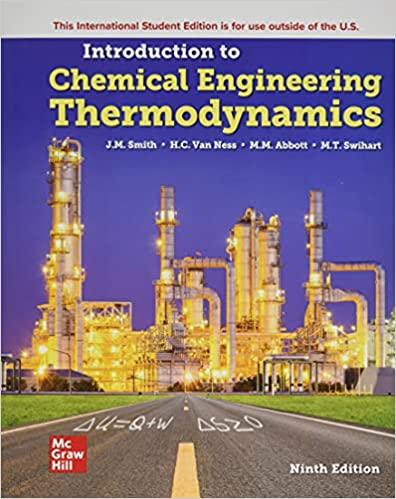Answered step by step
Verified Expert Solution
Question
1 Approved Answer
Find G for the following reaction at 2 9 8 . 1 5 K , using H f and S values. Be sure your answer
Find for the following reaction at using and values. Be sure your answer has the correct number of significant figures.
Note: Reference the Thermodynamic properties of pure substances table for additional information.
Note: Reference the SI prefixes table for additional information.
Find of the reaction. Report the value with the, appropriate sign. Be sure your answer has the correct number oi signcicant figures.
A fermenter of diameter and liquid height is used for production of ustilagic acid by Ustilago zeae. The pressure at the top of the fermenter is atma. The vessel is stirred using dual Rushton turbines and the fermentation temperature is The dissolved oxygen tension is measured using two electrodes: one electrode is located near the top of the tank, the other is located near the bottom. Both electrodes are calibrated in situ in sterile culture medium. The dissolved oxygen reading at the top of the fermenter is air saturation; the reading at the bottom is air saturation. The fermenter is sparged with air at at a flow rate of measured at atmospheric pressure. Offgas leaving the vessel at a rate of contains oxygen. The solubility of oxygen in the fermentation broth is not significantly different from that in water. The density of the culture broth is
a What is the oxygen transfer rate?
b Estimate the pressure at the bottom of the tank.
c The gas phase in large fermenters is often assumed to exhibit plug flow. Under these conditions, no gas mixing occurs so that the gas composition at the bottom of the tank is equal to that in the inlet gas stream, while the gas composition at the top of the tank is equal to that in the outlet gas stream. For the gas phase in plug flow, estimate the oxygen solubility at the top and bottom of the tank.
d What is the value of kLa?
e If the cell concentration is what is the specific oxygen demand?
f Industrial fermentation vessels are rated for operation at elevated pressures so they can withstand steam sterilization. Accordingly, the fermenter used for ustilagic acid production can be operated safely at a maximum pressure of atma. Assuming that respiration by zeae and the value of kLa are relatively insensitive to pressure, what maximum cell concentration can be supported by oxygen transfer in the fermenter after the pressure is raised?

Step by Step Solution
There are 3 Steps involved in it
Step: 1

Get Instant Access to Expert-Tailored Solutions
See step-by-step solutions with expert insights and AI powered tools for academic success
Step: 2

Step: 3

Ace Your Homework with AI
Get the answers you need in no time with our AI-driven, step-by-step assistance
Get Started


